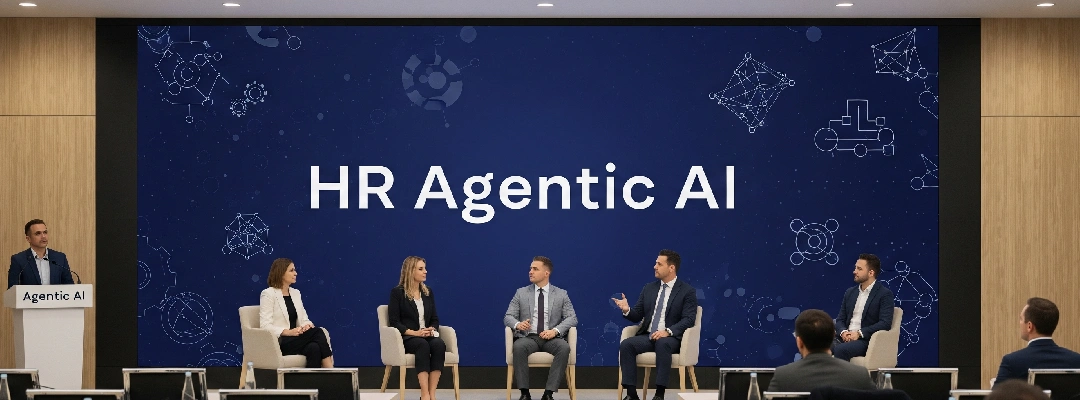Introduction
What if your HR team could delegate onboarding, policy queries, and employee engagement to a smart digital assistant? Agentic AI—autonomous systems that can learn, decide, and act—are making this possible. When trained properly, these AI agents can streamline HR tasks while preserving critical human judgment.
I’ll break down how agencies can train HR agentic AI effectively using quality data, guardrails, and oversight—so your agency thrives whether you’re a top-tier creative agency in Mumbai or creative agency in Bangalore.
Why This Topic Matters
Adopting HR agentic AI isn’t just a tech novelty—it’s a strategic advancement:
- HR agents now handle repetitive tasks, freeing your team to focus on creative strategy and employee well-being.
- Leaders warn: autonomy without guardrails risks errors and bias. Just like autopilot needs pilots, agentic AI demands oversight .
- Data quality is non-negotiable: clean, consistent data drives accuracy, especially in sensitive HR decisions.
In an industry driven by people, training HR agentic AI right strengthens trust, compliance, and operational efficiency.
1. The Foundation: Data Quality & Preparation
“Good, clean representative data is king,” writes Beamery on HR AI.
Start by:
- Cleaning data: Remove duplicates, fill missing values, standardize formats.
- Ensuring representativeness: Include diverse employee records to prevent bias.
- Labeling intentionally: Use structured tags (e.g. “probation_period_completed”) to guide the agent.
Workday’s success stories show that a single, centralized clean dataset leads to reliable decisions.
2. Guardrails: The Rules that Keep AI on Track
AI guardrails act like freeway barriers—preventing agents from “veering off course”.
Essential layers include:
- Model-level filters: Avoid harmful or biased outputs via toxicity or bias checks.
- Tool orchestration rules: Define task frequency, confirmation requirements, execution scope.
- Policy enforcement: Map agent actions to legal and internal HR policies before execution.
For example, before approving leave, the agent confirms quota and notifies a human if exceptions arise. That’s a well-defined guardrail in action.
3. Human Oversight: Supervising Smart Machines
Complete automation is still fiction. As Databricks CEO Ali Ghodsi emphasizes: humans remain vital in supervising agentic AI.
Three oversight modes:
- Human-in-the-loop: Final approval steps, e.g. salary adjustments or policy exemptions.
- Human-on-the-loop: Periodic review dashboards flag anomalies.
- Strategic guidance: Leadership refines policies, ethical boundaries, and purpose (en.wikipedia.org, arionresearch.com).
Workday embeds humans to oversee everything—from law compliance to bias management .
4. Governance & Monitoring: Keep Agents Accountable
Introduce governance as you would in a creative campaign:
- Establish AI governance teams to monitor performance, bias and compliance .
- Use logging and audit trails for agent actions.
- Adopt continuous monitoring frameworks to catch errors early .
Best practice: “Verify then summarize”—automatically confirm every crucial step and archive it .
5. Step-by-Step Guide to Training HR Agentic AI
- Audit workflows: Identify repeating HR tasks (onboarding, leave approval, policy queries).
- Collect & clean data: Use HRIS, ATS, surveys—ensure no bias.
- Define guardrails: Set rules for task triggers and human approvals.
- Pilot small: Start with onboarding emails, measure accuracy and satisfaction.
- Evaluate & iterate: Monitor errors, refine data and policy rules.
- Scale responsibly: Expand to payroll, training prompts—but always with oversight.
Conclusion
Training HR agentic AI using quality data, robust guardrails, and human oversight ensures these systems serve your agency—not replace it. For creative agencies in Mumbai and creative agencies in Bangalore, this means fewer manual tasks, fairer decision-making, and more time for crafting campaigns—and caring for your people.
Does this interest you? Connect with us to see how we can help you!
FAQs
- What is HR agentic AI?
AI agents that autonomously learn, decide, and act in HR tasks with minimal human prompts. - Why is data cleaning essential?
Clean, labeled data ensures fairness and accuracy—especially important in HR . - What are AI guardrails?
Rules, filters, and orchestration controls that steer AI away from harmful or illegal outputs. - Do humans still matter?
Absolutely—oversight prevents errors, bias, and misuse. - How do you pilot agentic AI?
Start small (e.g., onboarding emails), measure impact, and refine before scaling. - What governance is needed?
Teams to monitor bias, compliance, logs, and audit trails. - Can guardrails pivot during runtime?
Yes—dynamic rules should enforce checks at runtime. - How to monitor performance?
Dashboards, anomaly detection, and periodic human audits. - What risks exist?
Bias, hallucination, security breaches—mitigated by strong oversight and data privacy measures . - Is full automation possible?
Not yet. AI helps—but responsible frameworks keep humans involved.
Some of the services that Clevertize provides are:
Creative Services, Performance & Digital Media Marketing, Visual Identity & Branding, Campaign Management & Analysis, UI/UX & Website design, Video creation, Media planning & buying, Chatbot & more.
If Return on Investment is critical for you, talk to Clevertize!
Reach out to us at saumya@clevertize.com!





